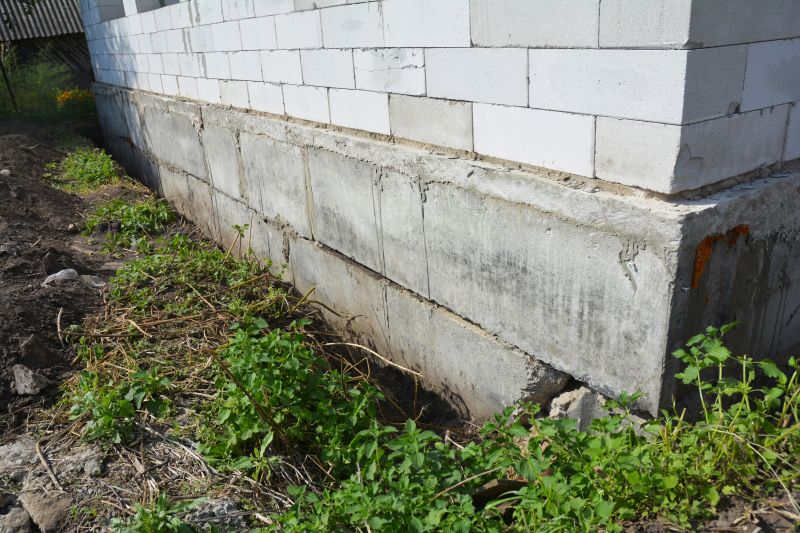Favorite Products for Concrete Repair That Ensure Long-Term Performance
Identify trusted materials and tools that provide lasting fixes and maintain the integrity of your concrete structures.
 Concrete repair products are essential for maintaining the integrity and appearance of concrete surfaces in residential, commercial, and industrial settings. These products are designed to address a variety of issues such as cracks, surface spalling, and structural damages. Proper selection and application of the right repair materials can extend the lifespan of concrete structures and prevent further deterioration. Whether dealing with small cracks or larger surface damages, understanding the different types of repair products available can help homeowners and professionals choose suitable solutions.
Concrete repair products are essential for maintaining the integrity and appearance of concrete surfaces in residential, commercial, and industrial settings. These products are designed to address a variety of issues such as cracks, surface spalling, and structural damages. Proper selection and application of the right repair materials can extend the lifespan of concrete structures and prevent further deterioration. Whether dealing with small cracks or larger surface damages, understanding the different types of repair products available can help homeowners and professionals choose suitable solutions.
Top Overall Option
Multi-Purpose Concrete Repair Compound
A versatile repair compound designed to address a wide range of concrete issues, including cracks, surface spalls, and holes. It offers good adhesion, durability, and ease of application, making it suitable for both DIY projects and professional repairs. Its compatibility with various concrete surfaces and ability to withstand weathering make it a reliable choice for long-term repairs.
Types of Products For Concrete Repairs
Concrete Patch Mixes
Pre-mixed or dry mix products used for filling cracks and small holes, providing a smooth finish and structural support.
Epoxy Injection Resins
High-strength adhesives used to repair cracks that compromise structural integrity, often used in load-bearing areas.
Surface Fillers and Patches
Materials designed for cosmetic repairs, surface leveling, and filling minor surface imperfections.
Sealants and Coatings
Protective layers that seal surface cracks and prevent water ingress, enhancing durability.
Polyurethane Foam Fillers
Expandable foams used for filling larger voids and cracks, providing insulation and support.
Hydraulic Cement
Fast-setting cement used for emergency repairs and sealing active leaks or water ingress.
Concrete Resurfacing Products
Thin overlays and coatings that restore surface appearance and provide a new protective layer.
Bonding Agents
Adhesives that improve the bond between old and new concrete layers during repairs.
Crack Repair Tubes and Caulks
Flexible fillers used for sealing narrow cracks and preventing further damage.
Fiber-Reinforced Repair Products
Composite materials that add tensile strength and crack resistance to repaired areas.
Popular Choices
Widely used for quick fixes and surface repairs, these products are available in various formulations to suit different needs.
Popular for structural crack repairs, providing strong adhesion and durability.
Commonly selected for smoothing uneven surfaces and preparing for resurfacing.
Effective in preventing water penetration and protecting concrete from weather damage.
Flexible and weather-resistant, suitable for sealing cracks in outdoor concrete surfaces.
Popular for emergency repairs due to their rapid setting and water sealing properties.
Used to restore and refresh worn or damaged concrete surfaces with a new layer.
Enhance adhesion between old and new concrete during repairs.
Ideal for sealing narrow cracks and joints, maintaining flexibility over time.
Popular for adding tensile strength and crack resistance to repair areas.
Concrete repair products vary widely in their formulations, application methods, and intended uses. Some are formulated for quick fixes, while others provide long-term durability and strength. Commonly used products include patching compounds, sealants, epoxy resins, and surface fillers. Each type offers specific benefits and is suited for different repair scenarios. For example, epoxy-based products are often preferred for structural repairs due to their high strength and bonding capabilities, whereas surface fillers are suitable for cosmetic repairs and minor surface imperfections.
When selecting concrete repair products, factors such as the size and depth of the damage, exposure conditions, and the type of concrete surface should be considered. Proper surface preparation, including cleaning and roughening the area, is crucial for optimal adhesion and performance. Additionally, understanding the curing time and environmental conditions during application can influence the longevity and effectiveness of the repair. Investing in the right product and applying it correctly can result in a durable and visually appealing repair that restores the integrity of the concrete surface.
In Brownsburg, Indiana, where many residential and commercial properties feature concrete surfaces, having access to quality repair products can be highly beneficial. Local suppliers and hardware stores typically stock a variety of solutions suitable for different repair needs, from small cracks to large surface repairs. Consulting with professionals or experienced DIYers can also aid in selecting the most appropriate products for specific projects, ensuring successful and lasting repairs.
Key Buying Considerations
- Identify the type and extent of damage to determine the appropriate repair product.
- Consider whether the repair needs to be structural or cosmetic.
- Check the compatibility of the product with existing concrete surfaces.
- Review environmental conditions such as exposure to water, weather, or chemicals.
- Determine the required curing time and application temperature range.
- Evaluate ease of application, especially if DIY repair is intended.
- Assess the longevity and durability expectations for the repair.
- Look for products with good adhesion properties to ensure long-lasting repairs.
- Consider the size of the repair area to select appropriately sized products.
- Check for any specific safety or handling instructions associated with the product.
- Review customer feedback and ratings for insights into product performance.
- Verify if the product is suitable for both interior and exterior use.
- Determine if additional surface preparation tools or materials are needed.
- Consider the budget and cost-effectiveness of the repair solution.
